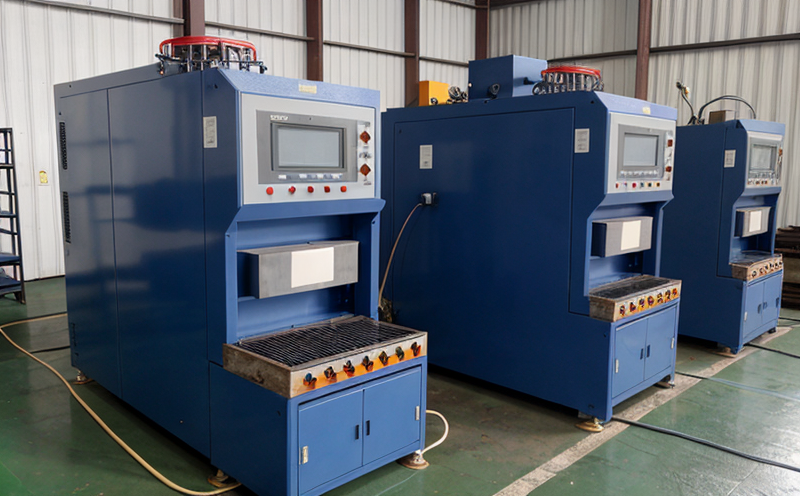Raw Materials & Input Quality Testing
In industrial manufacturing and processing, raw materials and input quality testing is a critical aspect that ensures the consistency, reliability, and overall quality of production processes. This service involves comprehensive analysis to evaluate the chemical composition, physical properties, and performance characteristics of raw materials before they are incorporated into final products. Quality managers, compliance officers, R&D engineers, and procurement teams rely on this service to maintain high standards in their supply chains.
The importance of raw material quality cannot be overstated. Poor-quality inputs can lead to substandard product outputs, increased costs due to rework or scrap, and even potential safety issues if the materials do not meet regulatory requirements. By rigorously testing these materials, manufacturers can avoid costly mistakes and ensure that their products consistently meet internal specifications as well as external standards.
The testing process typically begins with a detailed review of the supplier's documentation, which includes certificates of analysis (CoA), material safety data sheets (MSDS), and other relevant information. Once this preliminary assessment is complete, actual samples are taken from the raw materials and subjected to various analytical techniques tailored to the specific type of material being tested.
For metals like steel or aluminum, common tests include mechanical property measurements such as tensile strength, yield strength, elongation, hardness, and impact resistance. These properties are determined using machines like universal testing machines (UTMs), Brinell hardness testers, Rockwell hardness testers, and Charpy impact testers. For polymers or plastics, melt flow rate (MFR) tests assess the ease with which the material flows during processing.
Chemical analysis is another crucial component of raw materials testing. This might involve gas chromatography-mass spectrometry (GC-MS), infrared spectroscopy (IR), nuclear magnetic resonance (NMR), or other advanced analytical methods depending on the nature of the raw material being analyzed. These tests help identify any impurities, contaminants, or defects that could affect the final product's quality.
Physical property testing can also encompass particle size distribution analysis using laser diffraction instruments, porosity determination through mercury intrusion porosimetry (MIP), and surface area measurement via BET (Brunauer-Emmett-Teller) adsorption methods. Such tests are particularly important for powder materials or porous substances where uniformity across batches is essential.
Once all the required tests have been conducted, detailed reports are generated summarizing the results of each test along with interpretations and recommendations based on these findings. These reports serve multiple purposes including informing procurement decisions about supplier selection, guiding R&D efforts aimed at improving formulations or processes, and providing compliance officers with evidence that supports adherence to relevant regulations.
The success of any manufacturing operation depends heavily upon reliable raw material quality testing. By investing in this service early on in the supply chain management process, companies can significantly reduce risks associated with variability in incoming materials while simultaneously enhancing their ability to produce consistent high-quality outputs consistently.
| Applied Standards |
|---|
| ISO 9001:2015 – Quality Management Systems |
| ASTM E146-18 – Standard Practice for Acceptance of Materials and Products |
| EN ISO 9001:2015 – Quality Management Systems |
| IEC 61508 – Functional Safety of Electrical/Electronic/Programmable Electronic Safety-Related Systems |
International Acceptance and Recognition
- The testing results from this service are widely accepted across numerous industries including automotive, electronics, pharmaceuticals, food & beverage, and construction.
- Results comply with international standards such as ISO 9001:2015 for quality management systems and IEC 61508 for functional safety of electrical/electronic/programmable electronic safety-related systems.
- The lab adheres to strict procedures that ensure the accuracy, reliability, and consistency of test results. This includes calibration of all instruments before each use and adherence to established protocols during sample preparation and analysis.
- Our certified personnel undergo regular training to stay updated on new techniques and methodologies in raw materials testing.
- The laboratory also participates actively within industry forums to contribute towards developing best practices for raw material quality assurance.
Environmental and Sustainability Contributions
Raw material quality testing plays a pivotal role not only in ensuring product quality but also in promoting sustainable manufacturing practices. By identifying impurities or defects early on, companies can minimize waste throughout the production process, thereby reducing energy consumption, water usage, and emissions associated with remediation activities.
Moreover, adhering to strict environmental regulations through rigorous testing helps prevent non-compliant products from entering the market, which in turn protects both the environment and public health. For instance, accurate identification of harmful substances within raw materials ensures compliance with directives such as REACH (Registration, Evaluation, Authorisation and Restriction of Chemicals) in Europe.
The insights gained from these tests also enable manufacturers to innovate more eco-friendly products by selecting greener alternatives where possible. This shift towards sustainable practices benefits both the company’s bottom line and society at large by fostering a cleaner environment for future generations.





